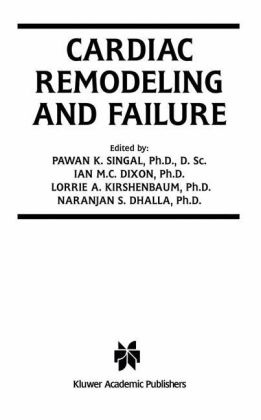Read more
The importance of the developmental approach for experimental and clinical cardiology is indisputable. Clinical-epidemiological studies have clearly shown that the risk factors of serious cardiovascular diseases, such as atherosclerosis and ischemic heart disease, are already present during the early phases of ontogenetic development. Furthermore, congenital cardiovascular malformations remain the single largest cause of infant mortality from congenital defects in industrial countries. It is therefore not surprising that the interest of theoretical and clinical cardiologists in the developmental approach keeps increasing. Advances in molecular biology accelerated this trend substantially. This book is based on contributions presented at the international symposium The Developing Heart in Prague in May 2000. It is our contention that the biological, electrophysiological, morphological, functional, biochemical and functional approaches employed by distinguished scientists worldwide will provide the reader with a global picture for changes characterizing the developing heart. It should stimulate the curiosity of cardiovascular scientists in gaining insight into the mechanisms of normal and pathological development.
List of contents
"Dedication: A Tribute to Dr. Norman Alpert. Preface. Acknowledgments.
I: Heart Failure and Therapies. 1. Pathophysiology of Heart Failure: Role of Oxygen Free Radicals; J. Kalra. 2. Therapeutics in Congestive Heart Failure: From Hemodynamics to Neurohormones; S.R. Goldsmith. 3. Dilated Cardiomyopathies and Congestive Heart Failure; B. Maisch, et al. 4. The Failing SHHF Rat Heart; R.A. Altschuld, et al. 5. Increased Expression of Na+-Ca2+ Exchanger in the Myocardium. Impact on Contractility and Arrhythmogenesis in Heart Failure; W. Schillinger, G. Hasenfuss. 6. Sarcoplasmic Reticulum Proteins and Potential Targets for Gene Therapy of Heart Failure; J.M.J. Lamers, et al. 7. Sarcoplasmic Reticulum Gene Expression of Ca2+-Cycling Proteins as a Target for the Treatment of Heart Failure; T. Netticadan, et al. 8. Effects of the Beta-Adrenoceptor Blocker Carvedilol in Children with Myocardial Failure; H. Scholz, et al. 9. The Contractile and Neurohormonal Roles of Phospholamban in Heart Failure; R. Dash, E.G. Kranias. 10. Annexins: Roles in the Regulation of Ca2+ Handling Proteins During Heart Failure; E. Camors, et al. 11. Modulators of Myofibrillar Function: Implications in Myocardial Failure; P. Vanburen, et al.
II: Remodeling and Heart Failure. 12. Structural Remodeling of Cardiac Myocytes in Hypertrophy and Progression to Failure; A.M. Gerdes, Xuejun Wang. 13. Three-Dimensional Imaging of Microvascular Morphology and Remodeling in Acute and Chronic Myocarditis; A. Takeda, et al. 14./"
Summary
According to the World Health Report (2000 http:/ /www. who. int/whr), of the 55 million deaths worldwide in 1999, more than 16 million were secondary to car diovascular complications. With the prospect of world population increasing from the current level of 6 billion to 9 billion by the middle of this century, the burden of cardiac disease is going to increase astronomically. Furthermore, scientists are being challenged not only to reduce mortality, but also to improve quality of life. Thus, more than ever, intellectuals from different disciplines including biology, sociology, informatics and health care have to join forces to meet the mandate. The World Heart Congress with a focus on "Frontiers in Cardiovascular Health" held in Winnipeg during July 6-11, 2001, made a unique attempt to bring these specialists together to brainstorm and map out the course of action for cardiovascular research and health in the next century. Anytime there is a relative increase in the workload on the heart, there are adap tive myocardial as well as humoral responses. When these adaptations or remodel ing at the organ, subcellular or gene level, become inadequate for a proper tissue perfusion, the condition of heart failure ensues. Prevention of the factors leading to the relative increase in workload as well as a better understanding of the adap tive responses and their failure are some of the hopes to combat the morbidity and mortality due to heart failure.

